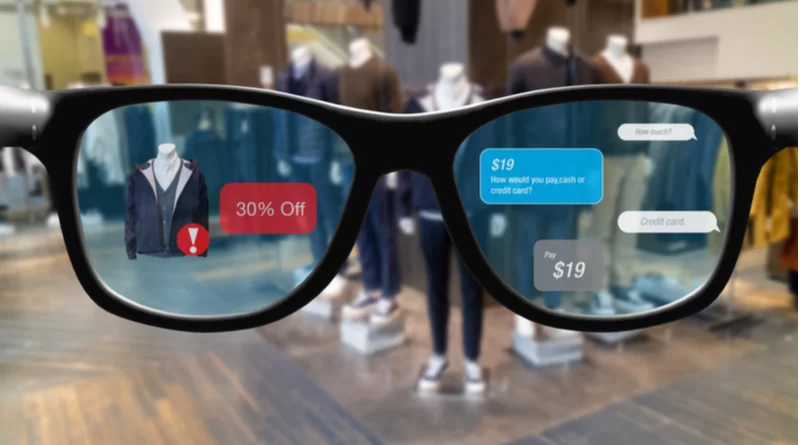How Apple’s AR Glasses Will ‘Kill’ the iPhone
Apple’s augmented reality (AR) glasses will not be available for several years. However, when Apple finally releases them, they will begin to replace the iPhone. The switch will not be immediate, and it will not be obvious to everyone. But once Apple manages to fit a computer as sophisticated as an iPhone inside a pair of ordinary-looking glasses, the iPhone will be rendered obsolete.
The iPhone and Android devices are not going away. Because they will not. We’ll keep buying them long after AR glasses become commonplace. However, they will be relegated to a secondary accessory. And each generation of AR glasses that follows the early models will further erode the iPhone’s appeal.
With that in mind, we’re about to explain how Apple’s AR glasses will transform the smartphone industry, allowing Apple to pull off an unprecedented feat: “killing” the iPhone.
Do We Really Need Augmented Reality Glasses?
When the iPhone debuted in 2007, it changed everything in the smartphone industry, and by extension, the entire computer market. However, not everyone predicted that this new expensive form factor would effectively kill any smartphone that came before the iPhone. Not everyone was willing to admit it.
Similarly, when Apple AR Glasses are officially released a few years from now, not everyone will see their utility. Or consider the use cases. And they refuse to believe that the iPhone is about to be dethroned. That’s completely understandable. When Steve Jobs unveiled the first-generation iPhone, even Apple didn’t see its full potential.
The App Store is largely responsible for releasing the iPhone’s full potential, despite Apple’s initial opposition.
People didn’t understand why Nokia, BlackBerry, Palm, and Windows Mobile phones were doomed because they couldn’t predict how convenient it would be to carry around a rectangle with a touchscreen in your pocket. The same thing will happen with augmented reality glasses. It will take a few years for the headset to become a must-have item. The iPhone is not going to “die” overnight.
However, once use cases emerge and people begin imagining and experiencing new ways to interact and experience entertainment while wearing AR glasses, they will not want to go back to the tiny rectangle in their jeans or purses. With that in mind, what better way to demonstrate how Apple will kill the iPhone using its AR glasses than through imagery? That is the best way to comprehend why the upcoming products will bring about a massive revolution in the mobile industry.
Let Us Begin With the Design of the AR Glasses
The AR glasses will eventually resemble regular glasses. They may be thicker at first, but this will change over time. They’ll have premium components, a long battery life, voice commands, and touch interaction. They will project high-resolution content directly on the user’s retina. They may even dim to provide virtual reality (VR) entertainment, such as watching a movie on a virtual screen.
The first-generation Apple AR glasses will almost certainly connect to an iPhone. That’s why I’ve put quotation marks around the word “kill.” No, I do not anticipate the glasses physically harming the iPhone. They will change the way we use phones. Now that the glasses provide a larger canvas overlaid on top of real-life objects, we won’t want to take it out of the pocket.
What Are the AR Glasses Capable of That the iPhone Cannot?
Our primary computers are iPhones and their Android counterparts. They are the first devices we use to get things done, whether for work or for fun. They’ve replaced the majority of the gadgets we used to use. Our primary computers are iPhones and their Android counterparts. They are the first devices we use to get things done, whether for work or for fun. They’ve replaced the majority of the gadgets we used to use. And they can often solve the problem right away, eliminating the need to upgrade to a larger computer.
Entertainment
The AR glasses will take the same route. They will be the first computer that we use. Even if they are technically always connected to an iPhone nearby. The most obvious use scenario for AR glasses is entertainment. They’ll project 3D content onto the real world. It could be a movie, a game, or simply a flock of birds with which you can interact.
Video Conferencing
If you enjoy FaceTime on your iPhone, you’ll enjoy the AR Glasses version. Although it may sound like science fiction, you will most likely be able to video conference with others and see a 3D video stream of that person in front of your eyes. They will have a similar experience. The AR glasses alone will not be sufficient to deliver this experience, and you may need to use other devices to capture live video of you and beam it to the other person. Perhaps you’ll need to use the iPhone cameras to record. However, it is the AR glasses that will allow you to access this next-generation variant of 3D FaceTime. Once everyone in the meeting has the AR glasses, zoom calls will be obsolete.
Working With the AR Glasses
Before you get to an iPad or computer, you already use the iPhone for work-related tasks. You won’t need to look for a larger display with the AR glasses. You’ll just make one, wherever you are, to address the work-related task that’s still giving you headaches even after you’ve left the office. The glasses will track your movements, allowing you to interact with the larger canvas through gestures and voice commands. You’ll be zooming in and out, swiping pages, and picking and manipulating objects. It’ll be the closest thing to Minority Report we’ll get. Similarly, the AR glasses will be used at school. You’ll also be able to share your virtual display with colleagues, whether for work or pleasure.
Again, the iPhone’s superior processing power may play an important role in transforming the AR glasses into a large computer. However, the iPhone will not leave your pocket or bag while this is happening. You won’t even have to unlock the phone and tap a bunch of app icons on the screen to get it to happen.



